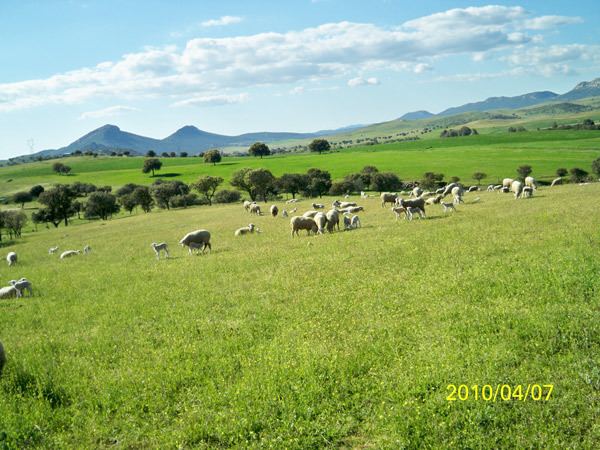 | ||
La dehesa ind mita
Dehesa is a multifunctional agro-sylvo-pastoral system (a type of agroforestry) and cultural landscape of southern and central Spain and southern Portugal, where it is known as montado. Dehesas may be private or communal property (usually belonging to the municipality). Used primarily for grazing, they produce a variety of products including non-timber forest products such as wild game, mushrooms, honey, cork, and firewood. It is also used as natural habitat for the Spanish fighting bull and the Iberian pig. The tree component is oaks, usually holm (Quercus ilex) and cork (Quercus suber). Other oaks, including melojo (Quercus pyrenaica) and quejigo (Quercus faginea), may be used to form dehesa, the species depending on geographical location and elevation. Dehesa is an anthropogenic system that provides not only a variety of foods, but also wildlife habitat for endangered species such as the Iberian lynx and the Spanish imperial eagle.
Contents
- La dehesa ind mita
- Dehesa s finish 2016 fiba 3x3 world championships
- Nature
- Importance
- Economic context
- Extent
- Other uses of the term
- References
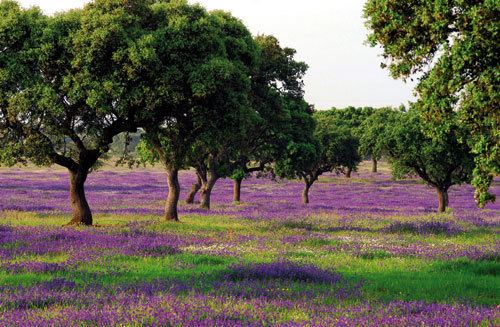
Dehesa s finish 2016 fiba 3x3 world championships
Nature
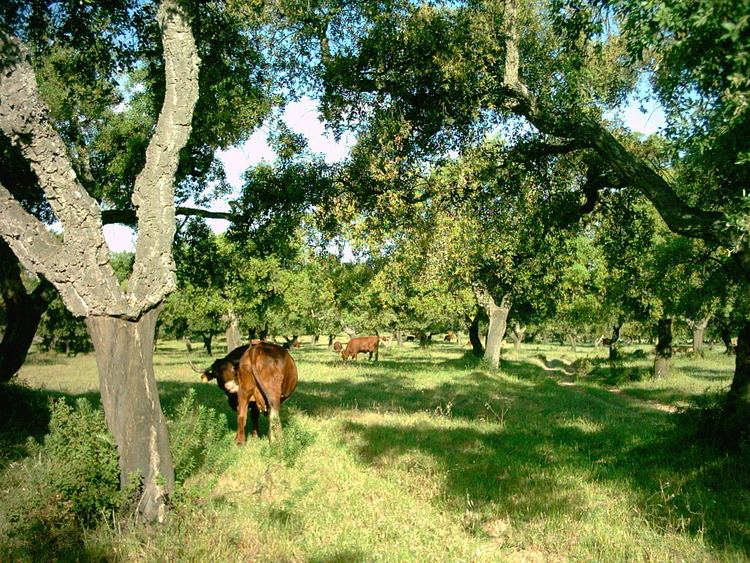
The dehesa is derived from the Mediterranean forest ecosystem, consisting of pastureland featuring herbaceous species for grazing and tree species belonging to the genus Quercus (oak), such as the holm oak (Quercus ilex sp. ballota), although other tree species such as beech and pine trees may also be present. Oaks are protected and pruned to produce acorns, which the famous black Iberian pigs feed on in the fall during the montanera. Ham produced from Iberian pigs fattened with acorns and air-dried at high elevations is known as Jamón ibérico, and sells for premium prices, especially if only acorns have been used for fattening.
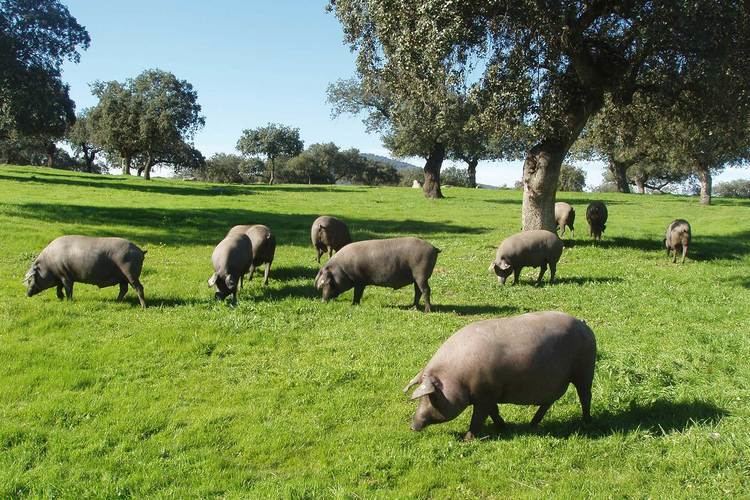
There is debate about the origins and maintenance of the dehesa, and whether or not the oaks can reproduce adequately under the grazing densities now forced upon the dehesa or montado. Goats, cattle, and sheep also graze in dehesa. In a typical dehesa, oaks are managed to persist for about 250 years. If cork oaks are present, the cork is harvested about every 9 to 12 years, depending on the productivity of the site. The understory is usually cleared every 7 to 10 years, to prevent the takeover of the woodland by shrubs of the rock rose family (Cistaceae), often referred to as "jara", or by oak sprouts. Oaks are spaced to maximize light for the grasses in the understory, water use in the soils, and acorn production for pigs and game. Periodic hunts in the dehesa are known as the monteria. Groups attend a hunt at a private estate, and wait at hunting spots for game to be driven to them with dogs. They usually pay well for the privilege, and hunt wild boar, red deer and other species.
Importance

The dehesa system has great economic and social importance on the Iberian peninsula because of both the large amount of land involved and its importance in maintaining rural population levels. The major source of income for dehesa owners is usually cork, a sustainable product that supports this ancient production system and old growth oaks. High end ibérico pigs and sale of hunting rights also represent significant income sources.
Economic context
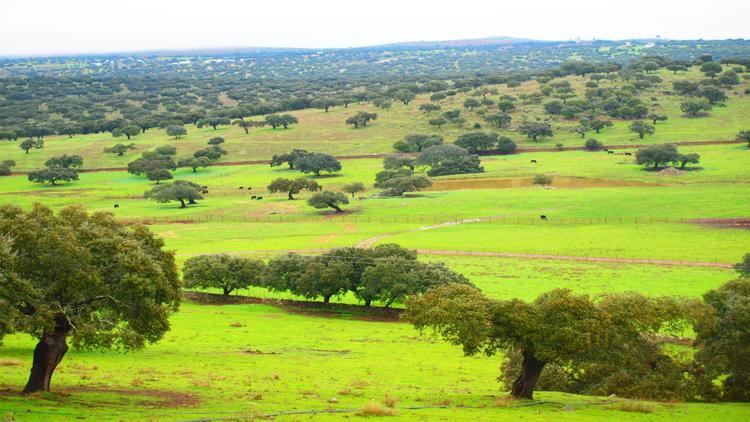
The area of dehesa usually coincides with areas that could be termed "marginal" because of both their limited agricultural potential (due to the poor quality of the soil) and a lack of local industry, which results in isolated agro-industries and very low capitalization.
Extent
Dehesa covers nearly 20,000 square kilometers on the Iberian peninsula, mainly in:
Other uses of the term
Dehesa also refers to the type of rangeland management of estates for private agro-livestock exploitation in Mediterranean-type forests from which multiple resources are obtained simultaneously.
